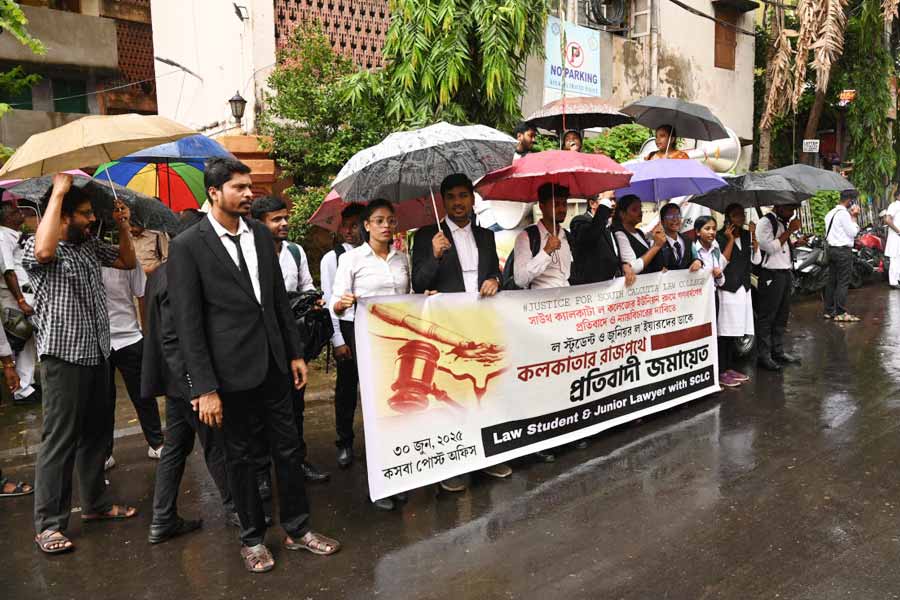 |
| Feel it or touch it: A painting by Akhilesh at the CIMA Gallery (Pic: D.P. Sinha) |
Feel it. It is untitled. Thus does Akhilesh title one of his works. And in so doing he implies a trail of ellipses to stimulate a fundamental poser that baffles uninitiated viewers: how to unravel “meanings” in abstract and semi-abstract art. Inviting viewers to “feel it” or “touch it” ? the latter is another work ? instead of trying to understand it, often following enigmatic titles, stresses the worth of spontaneous, even sensuous responses. And this idea, the idea of transcending ideas with the senses in art, especially non-representational art ? rarely communicated so pithily?is the first that viewers note in CIMA’s current show, Ideas and Concepts, on view till September 7.
The artist’s large grids shimmer with columns of tiny rectangles edged with white that together weave kinetic illusions of colour spectra and shifting lights. Elsewhere, playful little patterns in line and scraps of paint recall pictographic scripts that wait to be, but aren’t, deciphered.
Another remarkable artist is Yogesh Rawal, with his fascinating repertoire of variations. His paper collages are incarnated into works of utterly finished yet masculine elegance with the inventive use of cellulose and synthetic resin on treated wood. Subtle stone tones, marmoreal textures, grainy or graded colour planes configure rhythms of meditative cerebration. Like in Puzzle of Truth where the rigour of rectangles in browns is muted by overlapping layers of paper that merge as vague shadowy mirages buried beneath the surface and, therefore, in time. But the fluent chaos of Remembering Bhopal’s Modern Architect in incandescent oranges and reds and smudges of white proclaims an irrepressible, untamed spirit.
The third artist at the show is Prabhakar Kolte, another respected abstractionist. His paintings, anchored on immutable blocks of usually dark paint in the foreground, draws the viewer by intriguing hints of a drama within. Ultimately, tattered scaffolds of hurried strokes and dripping paint not only speak of flux but show reality, indeed life itself, as a provisional agenda of uncertainties.
Fields of strident white and bands of black go back to contrasts so fundamental that they cannot but hold the eye in Amitabha Das’ works. The composition is neat, perhaps too much so, although slivers of thick paint introduce textured nuances, while Samir Aich, pursuing “absolute art” beyond immediate reality, enquires into form and substance, line and colour. The human torso may morph into a string instrument. But the interesting idea the artist explores is how tenuous lines can give way to sculpturesque weight and dimension.
Baiju Parthan approaches his art by way of his intellect rather than his instinct. Hence, the complex of images, wired with obscure, involved references, and arranged in diagrammatic layouts, remains arcane.
Jaya Ganguly paints like a man. The visual paradigm of mangled bodies and tortured flesh as a theatre of inner torments and trauma is strongly suggested, with inspiration from masters like Bacon and Picasso, particularly the latter’s Guernica. Perspective is upturned, the eyes are often stricken and body parts are torn out and hammered into masses of dark flesh. Yet in some of the works a ligh-ter tone results in decorative additions that will amuse viewers.











